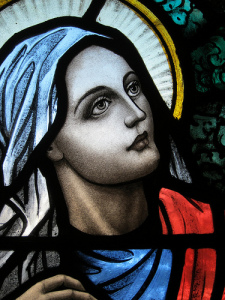A Fragment of the Gospel of Jesus’ Wife? Part Two
| Date: | 01 October 2012 |
| Author: | Kim Knibbe |

The previous post discussed the current state of affairs with regard to the finding of the fragment of papyrus in which Jesus seems to refer to his wife. The papyrus has been shown to date from the fourth century, the ink is still undergoing testing. Before the definitive results are published, however, polemics have already begun. Numerous web reactions on various grounds claim that the fragment is a forgery.
Francis Watson, from Durham University, argues that the text in the fragment is a collage of phrases culled mostly from the Gospel of Thomas (sayings 101 and 114). Stephen Emmel (University of Muenster) points to appearance and grammar as evidence of it being a forgery. Wolf-Peter Funk (Université Laval) argues that the small size of the fragment and especially its lack of context should prevent us from attaching too much value to our hypotheses (see here for an overview of the critical reactions).
The most sensational aspect of the text is without doubt Jesus’ referring to Mary as “my wife”. Due to the penurious condition of the papyrus fragment it is not possible to identify with certainty the Mary Jesus is referring to. However, the existence of early Christian traditions which echo a close relationship between Jesus and Mary of Magdala ( Gospel of Mary ; Dialogue of the Savior, Gospel of Philip ) and other traditions in which her worthiness as a disciple is put into question ( Gospel of Thomas; Gospel of Mary ), seem to point to Mary Magdalene as the most likely interpretation.
Did Jesus ever marry and have the life of a “normal” man with wife (and kids)? Of course there is no way of proving that he did, even though there is no evidence that he did not either. Until now we tended to think that this question was a modern preoccupation. In Kazantzakis’s book Jesus’s dream of having a normal man’s life was indeed Satan’s most modern (and perverse) move to tempt Jesus – which the latter, by the way, was strong enough to resist. In Scorsese’s film, even if based on Kazantzakis’s book, we see a much too human Jesus: his indulging in erotic dreams with Mary –which offended many at the end of the eighties– apparently reduces his humanity to our most basic instincts. However, this representation echoes Giovanni Papini’s twentieth-century-aesthetic view that Jesus’s love for the beauty of creation could not but have included women as well. More in line with the modern appeal of “conspiranoia” or conspiracy theories, Dan Brown’s Davinci Code has approached Jesus and his alleged relationship with Mary from the perspective of the implications this could have for writing of an alternative history Christianity (the numerous wrong views and assertions regarding early Christianity in the Davinci Code have been discussed at length by professor G.P. Luttikhuizen (http://theol.eldoc.ub.rug.nl/FILES/root/2005/Jezusenmariamagdalen/Jezus_en_Maria_Magdalena.pdf)).
However, if genuine, the text might provide evidence that this question was not as modern as we tended to think and that it concerned already early Christians. If genuine, the text should in any case be placed in the long line of interpretations of Jesus and his life in the light of positions and beliefs alien to him but important for his interpreters beginning immediately after Jesus’s death. Nevertheless, even if ink chemical analysis prove the text to be authentic I think W.P. Funk is right when he asserts that without its immediate context it will be difficult if not impossible to provide a sound interpretation of a text, let alone jump to conclusions regarding the value of the fragment for the history and development of Christianity, early Christian views on celibacy, marriage, and the role of female disciples in Early Christianity and the implications thereof for the place and function of women in the early Church.
Keep updated: Paleo Judaica
Questions and Answers on the website of the Harvard Divinity School
The reaction of the Vatican
References:
J.L. Borges, “Three Versions of Judas”, in Ficciones , 1944.
Kazantzakis, The Last Temptation of Christ , 1955.
Papini, The Story of Christ , 1921.
Lautaro Roig Lanzillota is an expert on new testament and early Christianity at the Faculty of Theology and Religious Studies of Groningen University.

